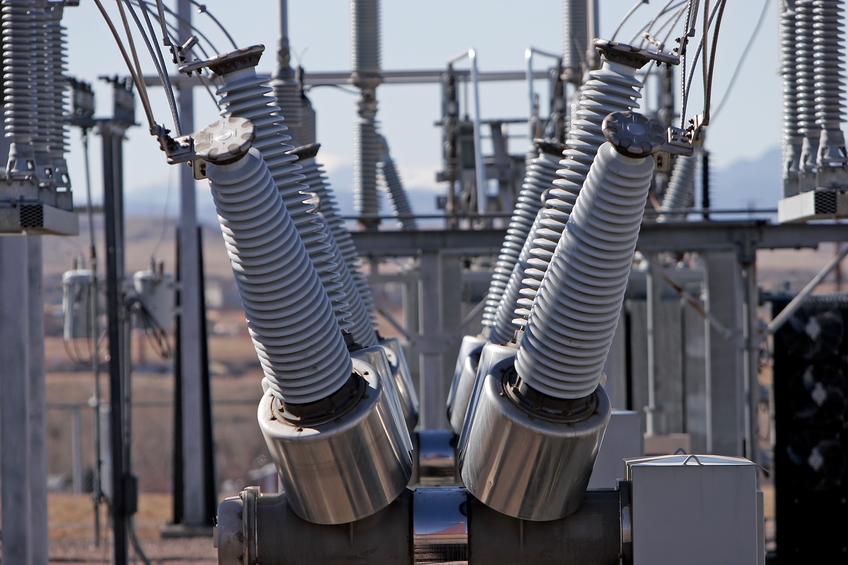Electrical Distribution 12 PDH Discount Package
Courses in this Package
Advantages of Electricity Storage to the Electric Grid (R02-013)
An Introduction to Electrical Systems for Medical Facilities (E04-011)
Basic Tools for Electrical Protection and Short Circuit (E04-039)
Fundamentals of Modern Electrical Substations - Part 1 (E02-010)

This online engineering PDH course discusses advantages to the electric grid that are gained through using electricity storage systems to supplement electrical generation systems. It presents a total of fourteen such advantages provided by an electricity storage capability, including ancillary services, grid system services and functional uses, end user/utility customer functional services, and renewables integration.
One example of an advantage is time-shifting, the purchase of electric energy when prices are low, and then storing it and using or selling the energy later when prices are high. Another example, possible only under certain grid conditions, is using energy storage to reduce the need to buy new central station generating capacity. A third example is using energy storage for grid regulation, that is, the damping of momentary differences caused by fluctuations in generation and loads. In general, the rapid-response characteristic (i.e., fast ramp rate) of most storage systems makes them especially valuable as a regulation resource.
This 2 PDH online course is intended for electric systems engineers/planners, storage system vendors, and regulators concerned with the design and implementation of stationary energy storage systems.
This PE continuing education course is intended to provide you with the following specific knowledge and skills:
- Learning about bulk energy services
- Learning about ancillary services such as regulation, spinning and non-spinning reserves, and voltage support
- Learning about transmission upgrade deferral and congestion relief
- Learning about distribution infrastructure services
- Learning about power quality, reliability, and retail energy time-shift
- Learning about stacked services
In this professional engineering CEU course, you need to review the course document titled, “Advantages of Electricity Storage to the Electric Grid” which is based on Chapter 1, “Electricity Storage Services and Benefits” of the “DOE/EPRI Electricity Storage Handbook in Collaboration with NRECA,” February 2015.
Once you complete your course review, you need to take a multiple-choice quiz consisting of fifteen (15) questions to earn 2 PDH credits. The quiz will be based on this publication.
Upon successful completion of the quiz, print your Certificate of Completion instantly. (Note: if you are paying by check or money order, you will be able to print it after we receive your payment.) For your convenience, we will also email it to you. Please note that you can log in to your account at any time to access and print your Certificate of Completion.

This online engineering PDH course will introduce you to electrical systems for medical facilities, including hospitals, medical and dental clinics, as well as medical and dental laboratories. It presents general electrical requirements, exterior and interior electrical systems, alternate power sources and lighting requirements. It also discusses equipment needs, patient safety and system reliability. It will provide you with the overview needed to address medical facility design issues using applicable codes and standards of practice.
This 4 PDH online course is intended for electrical engineers and other members of the building design team who want to learn more about this critical aspect of medical treatment facility design.
This PE continuing education course is intended to provide you with the following specific knowledge and skills:
- Learning about power supply criteria factors
- Learning about power supply reliability and durability requirements
- Learning about electrical requirements for Critical Care spaces
- Learning about special requirements for Wet Procedure locations
- Learning about normal power sources for hospitals and ambulatory care clinics
- Learning about transients control in medical facility power systems
- Learning about alternate power source requirements for hospitals, clinics and laboratories
- Learning about emergency power engine-generator sets for medical treatment facilities
- Learning about automatic power transfer switches in medical facility applications
- Learning about automatic transfer switch and bypass/isolation switch testing requirements
- Learning about ground fault protection equipment requirements for medical treatment facilities
- Learning about fuel storage tank requirements for emergency power equipment
In this professional engineering CEU course, you need to review the course document titled, "An Introduction to Electrical Systems for Medical Facilities".
Upon successful completion of the quiz, print your Certificate of Completion instantly. (Note: if you are paying by check or money order, you will be able to print it after we receive your payment.) For your convenience, we will also email it to you. Please note that you can log in to your account at any time to access and print your Certificate of Completion.

This online engineering PDH course presents the basic principles of the physics of overcurrents and their effects in electrical components. It discusses overcurrents of fault magnitude including basic methodology for the calculation of short circuits, which can be used as a basis for software calculations.
This course also describes symmetrical components for the engineer to have a basic knowledge of the mathematics of short circuit calculations. It presents per unit calculations method and examples, including conversion from one base to another, to analyze a power system using single line diagrams.
Overcurrent phenomena are complex events. When a circuit changes from a steady state condition to a completely different electrical state, the electrical components react in different ways. Analysis of these changing conditions, its physics and mathematical interpretation, are all part of the tasks that an engineer must tackle in order to understand how to protect the circuits, and in many cases, the personnel who work around the electrical system.
The 4 PDH online course is intended for electrical, chemical and mechanical engineers, as well as project managers in industry, who are interested either in learning more about electrical protection and the basis of short circuit methodology, or wish to refresh electrical protection and elements of the mathematics behind short circuit calculation concepts.
This PE continuing education course is intended to provide you with the following specific knowledge and skills:
- Identifying system elements and components
- Understanding the basics of symmetrical components and per unit methods
- Learning about the methodology of short circuit calculations
- Familiarizing with the impedance diagrams and protective device settings
In this professional engineering CEU course, you need to review the course document titled, "Basic Tools for Electrical Protection and Short Circuit" by Manuel Gooding.
Once you complete your course review, you need to take a multiple-choice quiz consisting of twenty five (25) questions to earn 4 PDH credits. The quiz will be based on the entire document.
Upon successful completion of the quiz, print your Certificate of Completion instantly. (Note: if you are paying by check or money order, you will be able to print it after we receive your payment.) For your convenience, we will also email it to you. Please note that you can log in to your account at any time to access and print your Certificate of Completion.

This online engineering PDH course series presents an overview of modern electrical substations, emphasizing their importance for reliable and effective operation of power systems; describing all major, auxiliary and control equipment; listing typical engineering issues associated with substation design and engineering; and providing recommendations for addressing these issues. The entire course series consists of three parts:
- Part 1: Mission of Electrical Substations and their Main Components
- Part 2: Electrical Substation Auxiliary and Control Systems
- Part 3: Electrical Substation Engineering Aspects
Part 1 of this course series is presented herein. This course starts with a discussion about the main goals that every utility company has, followed by a description of a typical power system structure, justification for voltage transformation and mission of substations. The next section of this course covers all main aspects of the substations including their mission, components, types and arrangement. All explanations are supported by numerous photos showing all substation major equipment and their installation options.
This 2 PDH online course is intended for electrical and civil engineers and designers, construction professionals, as well as utility company management and field personnel looking to expand their knowledge and experience in modern electrical substations.
This PE continuing education course is intended to provide you with the following specific knowledge and skills:
- Understanding of modern power systems arrangement, including the structure of Transmission and Distribution (T&D) system
- Understanding the substation mission and its place in the overall T&D structure
- Familiarizing with the substation main components
In addition, after completing this course, you'll be able to:
- List typical power system voltages
- Describe the reasons for voltage transformation
- Explain the meaning of sectionalization of power systems
- Describe all major substation components including:
- Power transformers
- Switching equipment
- Substation bus system
- Instrument transformers
- Explain when to use each type of switching equipment
- List all advantages and disadvantages of each type of substation bus system, including:
- Open air rigid bus
- Strain bus
- Gas insulated bus
- Cable bus
- Explain what current and potential transformers are used for and what their standard secondary values are
- Explain why overvoltage protection of substation elements is needed and what major means of this protection are
- List substation equipment installation options
In this professional engineering CEU course, you need to review Part 1 of Fundamentals of Modern Electrical Substations titled, “Mission of Electrical Substations and their Main Components”.
Upon successful completion of the quiz, print your Certificate of Completion instantly. (Note: if you are paying by check or money order, you will be able to print it after we receive your payment.) For your convenience, we will also email it to you. Please note that you can log in to your account at any time to access and print your Certificate of Completion.